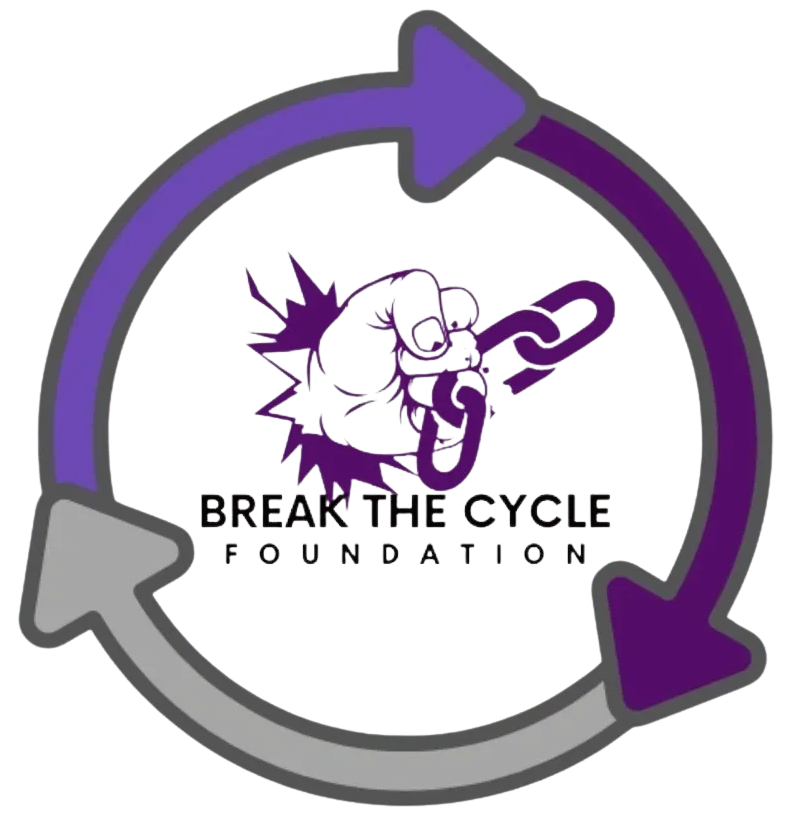Understanding Methadone Treatment
Methadone has been an essential part of opioid addiction treatment programs for over half a century. In this section, we delve into its role in addiction recovery and its effectiveness.
Methadone in Addiction Recovery
Methadone is an opioid medication used to treat opioid use disorder (OUD). It works by binding to and activating mu-opioid receptors in neurons, but it does so more slowly than drugs like heroin. This results in less intense pleasure feelings for individuals with OUD, while minimizing withdrawal symptoms and cravings.
By replacing the use of more dangerous opiates, methadone provides a safer alternative. It generates a far less intense high than heroin, which is instrumental in reducing opiate cravings (Crest View Recovery Center). Managing these cravings is a vital component of recovery, making methadone a critical tool in our mission to break the cycle of addiction.
Effectiveness of Methadone
The effectiveness of methadone in opioid treatment programs is well-documented. Methadone has been associated with the lowest risk of treatment discontinuation compared to other medications like buprenorphine and naltrexone (Case Western Reserve University). This higher retention rate is a significant benefit, helping more individuals stay committed to their recovery journey.
Advantages of Methadone Treatment
| Benefit | Description |
|---|---|
| Reduced Cravings | Methadone minimizes drug cravings effectively. |
| Withdrawal Management | Lessens severity of withdrawal symptoms. |
| Higher Retention Rates | Lower risk of treatment discontinuation compared to other medications. |
| Pregnant Women | Safe for use during pregnancy, with benefits outweighing risks. |
Combining methadone treatment with individual counseling and group therapy enhances its effectiveness. Counseling helps address the psychological aspects of addiction, ensuring a comprehensive approach to recovery.
For those considering methadone as part of their treatment plan, our team at Break The Cycle Foundation is here to guide you through the process. To learn more about whether methadone maintenance is right for you, visit how to know if methadone maintenance is right for you.
Understanding methadone treatment’s role and effectiveness provides a solid foundation for exploring its benefits and considerations in opioid treatment programs. Continue reading to discover more about the advantages of methadone in our comprehensive addiction treatment services.
Benefits of Methadone Treatment
Reduction in Opioid Cravings
One of the primary benefits of methadone in opioid treatment programs is its ability to significantly reduce cravings. Methadone is an opioid medication that has been used for over 50 years to treat opioid use disorder (NIDA). It binds to and activates mu-opioid receptors in a slower and longer-lasting manner compared to drugs like heroin or fentanyl. This slower activation results in less intense euphoria, thereby reducing the craving for illicit opioids.
By diminishing cravings, methadone helps individuals focus on their recovery process. This reduction in cravings is a vital component of a comprehensive treatment plan that typically includes counseling and behavioral therapies.
Aid in Withdrawal Symptoms
Methadone is also highly effective in alleviating withdrawal symptoms associated with opioid cessation. Withdrawal symptoms can include nausea, muscle aches, agitation, and insomnia, and they often dissuade individuals from attempting to quit opioids. Meticulously regulated methadone administration helps manage these withdrawal symptoms, making the detoxification phase more tolerable.
Methadone’s long-acting properties mean that individuals can take it once a day in various forms such as liquid, powder, or diskettes. This consistent dosing helps maintain stable blood levels of the medication, effectively managing withdrawal symptoms.
| Methadone Benefits | Details |
|---|---|
| Reduction in Cravings | Binds to opioid receptors slowly, less intense euphoria |
| Alleviation of Withdrawal Symptoms | Managed daily dosing, less painful detox |
The combination of reducing cravings and aiding in withdrawal makes methadone an essential tool in opioid treatment programs. To better understand if methadone maintenance is the right choice, explore our guide on how to know if methadone maintenance is right for you.
For a full understanding of how methadone can be integrated into a treatment plan that may also include individual counseling or group therapy, our team at Break The Cycle Foundation is here to guide you every step of the way.
Methadone Administration Tips
When we consider the benefits of methadone in opioid treatment programs, it’s essential to understand the correct administration methods to ensure its effectiveness. Here are vital tips for methadone administration that can help achieve optimum results:
Supervised Consumption
In the initial stages of methadone treatment, patients must receive their medication under the supervision of a practitioner. This approach ensures that the methadone is taken correctly, and it allows healthcare providers to closely monitor the patient’s response to the medication. Supervised consumption is crucial in:
- Observing compliance
- Reducing misuse
- Monitoring side effects
According to SAMHSA, supervised consumption is standard practice, especially when individuals begin their treatment. Healthcare professionals can adjust doses as necessary to achieve maximum effectiveness in reducing cravings and withdrawal symptoms.
Take-Home Doses
After a period of stability, patients may earn the privilege of taking methadone at home between program visits. The flexibility of take-home doses can be highly beneficial for maintaining daily routines and reducing the burden of frequent clinic visits.
However, proper guidelines and conditions must be met:
- Stability in treatment and adherence to the program
- Demonstrated responsibility in methadone use
- No recent history of drug misuse
This flexibility has been allowed since 2020 to accommodate patients’ needs better.
| Parameter | Requirement for Take-Home Doses |
|---|---|
| Time in Treatment | Minimum of several months with consistent progress |
| Program Compliance | Demonstrated adherence to methadone program |
| Absence of Recent Drug Use | No recent drug misuse or improper methadone use |
| Practitioner Approval | Supervised period and provider’s assessment |
These guidelines help ensure that the methadone treatment remains safe and effective. Patients and caregivers should be mindful of proper storage to prevent unauthorized access and misuse.
By carefully following these tips on methadone administration, we can maximize the benefits of the treatment and support patients in their recovery journey. For additional details on methadone maintenance and opioid treatment options, browse through our other helpful resources. Checking our insights on relapse prevention planning and understanding the intake and assessment process can further empower both patients and providers in the road to recovery.
Considerations for Methadone Use
Methadone for Pregnant Women
When considering methadone treatment for pregnant women, it is important to take into account the specific needs and health concerns of both the mother and the baby. Research from SAMHSA indicates that methadone can help pregnant women manage their Opioid Use Disorder (OUD) effectively. This medication not only helps reduce cravings and withdrawal symptoms but also minimizes health risks during pregnancy and childbirth.
Studies have shown that the benefits of breastfeeding while on methadone treatment outweigh the effects of the small amount of methadone that enters breast milk (SAMHSA). Comprehensive methadone maintenance treatment, which includes adequate prenatal care, can help reduce complications during pregnancy and at birth.
| Considerations for Pregnant Women on Methadone |
|---|
| Management of Opioid Use Disorder (OUD) |
| Reduction in cravings and withdrawal symptoms |
| Minimizing health risks for mother and baby |
| Safe breastfeeding with methadone treatment |
| Comprehensive prenatal care is essential |
Selecting the right treatment plan is crucial for expecting mothers. Our team at Break The Cycle Foundation offers comprehensive care and support, ensuring both mother and baby receive the best possible outcomes. For more information on structured counseling and prenatal care, visit our article on how structured counseling helps break the cycle of addiction.
Switching Medications
Switching medications while undergoing methadone treatment requires careful consideration and planning. The length of methadone treatment, as recommended by the National Institute on Drug Abuse, should be a minimum of 12 months. Some patients may require long-term maintenance, and any changes in medication should be monitored closely by a healthcare professional.
The gradual reduction of methadone dosage is advised to prevent withdrawal symptoms. Potential transitions might include switching to another medication for opioid use disorder, such as buprenorphine or naltrexone, depending on the individual’s specific needs and circumstances.
| Medication Switching Considerations |
|---|
| Minimum of 12 months treatment duration |
| Long-term maintenance may be required |
| Gradual reduction to prevent withdrawal |
| Transitioning to buprenorphine or naltrexone |
Our methadone programs at Break The Cycle Foundation provide continuous monitoring and support to ensure patient safety and efficacy of treatment. For more details on the intake process and how to set realistic recovery goals, visit our guide on understanding the intake and assessment process.
Choosing the right approach to manage Opioid Use Disorder is critical for long-term recovery. Our team is here to guide you every step of the way, ensuring you or your loved ones receive the support needed throughout this journey. To determine whether methadone maintenance is appropriate for you, check out our resource on how to know if methadone maintenance is right for you.
Methadone Treatment Effectiveness
Methadone has long been a cornerstone in opioid use disorder treatment programs. Its effectiveness can be evaluated by looking at patient retention rates and its impact on opioid-related deaths.
Patient Retention Rates
Methadone is associated with the lowest risk of treatment discontinuation compared to other medications like buprenorphine and naltrexone. This is crucial because continuity in treatment is key to successful recovery.
Research indicates that medication-assisted treatment, when combined with behavioral health therapy such as counseling, can significantly improve patient retention rates. This highlights the importance of integrated approaches in methadone programs.
For those seeking to understand the specifics of methadone maintenance in opioid treatment programs, it is essential to note its efficacy in keeping patients engaged in their recovery journey.
| Medication | Risk of Treatment Discontinuation |
|---|---|
| Methadone | Low |
| Buprenorphine | Similar to Methadone after a period |
| Naltrexone | Higher |
Impact on Opioid-Related Deaths
The United States has seen a dramatic increase in opioid-related deaths since the early 2000s. Ohio alone experienced a 1,081% rise in accidental opioid overdoses from 2000 to 2017. Methadone, a long-acting opioid agonist, reduces opioid craving and withdrawal symptoms and blunts the effects of opioids when taken as directed.
Expanding access to methadone and other medication-assisted treatments is essential in combating the opioid crisis. Policies that facilitate easier access to methadone can play a significant role in reducing mortality rates among those with opioid use disorder.
For those interested in comprehensive treatment options, methadone programs often include individual counseling and group therapy to further enhance recovery efforts.
By integrating methadone treatment with structured counseling and therapy sessions, programs can effectively improve patient outcomes and reduce the dire consequences of opioid addiction. For more details on how structured counseling aids in recovery, visit our article on how structured counseling helps break the cycle of addiction.
Methadone in Opioid Treatment Programs
Methadone plays a pivotal role in opioid treatment programs due to its efficacy in managing opioid dependency. At Break The Cycle Foundation, we advocate for the use of methadone within a comprehensive framework of care tailored to meet individual needs.
Flexible Treatment Options
Methadone is available only through approved opioid treatment programs (OTPs) in the United States. Under these programs, individuals typically need to visit the clinic daily or nearly daily. However, regulations since 2020 have introduced some flexibility in terms of take-home doses (NIDA).
Methadone treatment is recommended for a minimum duration of 12 months, although some individuals may require long-term maintenance (SAMHSA). At our foundation, we ensure that patients receive tailored treatment plans discussing dosage reduction gradually in collaboration with their practitioner.
| Treatment Duration | Recommendation |
|---|---|
| Minimum | 12 months |
| Long-term | Varies per patient |
Counseling and Comprehensive Care
Beyond medication, methadone treatment programs emphasize a holistic approach. Our OTP provides access to essential services including medical care, vocational training, educational resources, and comprehensive assessments.
Counseling plays a critical role in this framework. Patients engage in both individual counseling and group therapy sessions. Counseling helps patients develop coping strategies, address underlying issues, and set realistic recovery goals.
For a deeper understanding of how structured counseling supports addiction recovery, read our article on how structured counseling helps break the cycle of addiction.
At Break The Cycle Foundation, we ensure each treatment plan includes robust, ongoing counseling support. By maintaining a comprehensive care model, patients receive the well-rounded support necessary for effective recovery. For more detail on what patients can expect during the initial stages of their treatment, refer to our guide on understanding the intake and assessment process.
Understanding the intake and assessment process also outlines the steps taken during one’s first outpatient therapy session, guiding them through the early stages of their recovery journey.
By integrating methadone with flexible treatment options and comprehensive care, we provide a structured, supportive environment tailored to meet the diverse needs of individuals battling opioid dependency. Explore if methadone maintenance is the right choice and learn more about other relapse prevention planning strategies available at our foundation.







